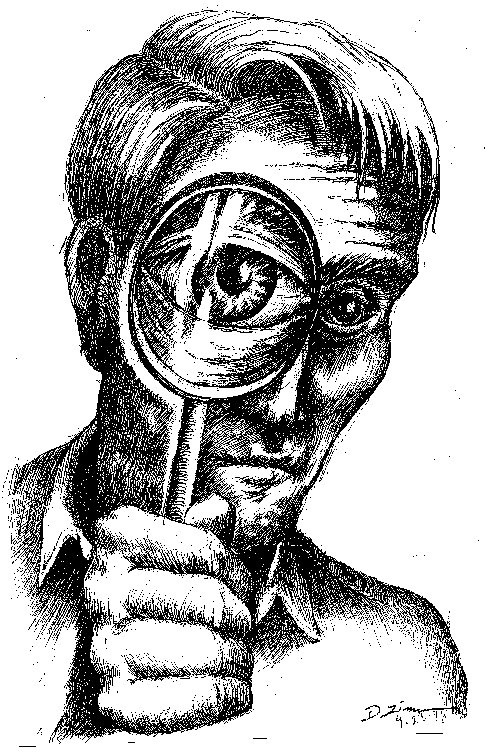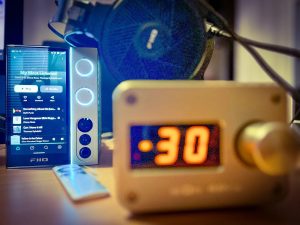Roger Skoff writes about the very latest hot setup
"The Whizbang 9 High-End audio preamp is a remarkable piece of audio equipment that aims to deliver an unparalleled listening experience. With its sleek design, advanced features, and excellent performance, it caters to audiophiles and music enthusiasts who demand the highest quality sound reproduction.
First and foremost, the design of the Whizbang 9 is nothing short of stunning. The attention to detail is evident, with its elegant chassis, clean lines, and premium materials. It exudes a sense of sophistication that would complement any high-end audio setup, making it a visual delight.
When it comes to functionality, the Whizbang 9 truly shines. It offers a wide range of inputs and outputs, accommodating various audio sources and ensuring compatibility with different systems. Whether you prefer analog or digital sources, this preamp has you covered. It supports multiple digital formats, including high-resolution audio, and provides seamless integration with modern devices.
One of the standout features of the Whizbang 9 is its meticulous signal processing capabilities. The preamp utilizes cutting-edge technology to enhance the audio signal, resulting in exceptional clarity, depth, and detail. The soundstage it creates is wide and immersive, allowing the listener to pick up on subtle nuances in the music. The transparency of the audio reproduction is truly impressive, maintaining the integrity of the original recording.
Moreover, the Whizbang 9 incorporates top-quality components that contribute to its remarkable performance. From the premium-grade capacitors to the precision resistors, every element has been carefully chosen to ensure optimal audio reproduction. The attention to detail in the design and selection of these components is a testament to the manufacturer's commitment to excellence.
In terms of user experience, the Whizbang 9 is a joy to operate. The controls are intuitive and responsive, allowing for effortless adjustment of volume, balance, and other settings. The preamp also comes with a remote control, enabling convenient access from a distance. The inclusion of a high-quality headphone amplifier further adds to the versatility of this product.
While the Whizbang 9 delivers exceptional audio quality, it is important to note that it comes with a hefty price tag. As a high-end audio preamp, it is targeted towards discerning audiophiles who are willing to invest in premium audio equipment. However, for those seeking the absolute best in sound reproduction and are willing to make the investment, the Whizbang 9 is undoubtedly worth considering.
In conclusion, the Whizbang 9 High-End audio preamp is a pinnacle of audio engineering and design. Its sleek aesthetics, advanced features, and outstanding performance make it a compelling choice for those who demand the utmost in sound quality. While it may not be accessible to all budgets, it offers an unparalleled audio experience that justifies its premium price. If you are a true audio enthusiast seeking a preamp that transcends expectations, the Whizbang 9 should be at the top of your list."
Would you buy one? Fortunately, you can't. And you shouldn't. The Whizbang 9 preamp doesn't exist, and probably never will. Instead, it is pure fiction, invented by an AI writing program and completely unedited after nothing at all other than my command to "Write a review of the Whizbang 9 High-End audio preamp."
While the product sounds unbelievable, it, in fact, is exactly that: Not believable. Nothing about it—not its sound or build quality; not its multiple digital inputs; not its premium capacitors and resistors; and not its "…meticulous signal processing capabilities." None of it. It is a pure fictional construct by a reviewer who doesn't exist, of a product he's never heard, and couldn't possibly have, because it doesn't exist either.
But it certainly did seem real, didn't it? And didn't you—even if for only a moment—find yourself thinking, "Hmmmmm, I think I'll have to check this thing out"? Or wondering about its "…hefty price tag"? Even I did, for a little while, there.
And that's a real problem.
As audiophiles, we know that audio equipment doesn't all sound the same. And that even the same equipment used in different combinations with other gear doesn't sound the same. And that, for example, even the same speakers played in different rooms will sound different. no one, not even the best and the most experienced reviewer for the very best HiFi publication is an audio "expert" or has ever heard all (or even 1/1000th of 1 percent of all) of the possible combinations of HiFi gear and listening rooms out there! We all, if we are to make reasonable decisions in selecting our hi-fi toys and goodies, must look to and rely upon other people for input and advice. Whether our friends or actual magazine professionals, we need reviewers.
And now, here comes a phony machine giving a rave review to a product it never heard!
What if I, instead of being a fellow HiFi Crazy trying to give you a friendly "heads-up" on what could happen if we don't rigorously guard against it, were a rogue marketer who cared nothing for any of us, but was just trying to sell untested products and make a buck at it? Would you be suckered by an AI-generated review declaring a poor (or even non-existent) product to be the next best thing? Would you even be able to tell if the product or the reviewer were real?
Right now, we still have reviewers we know and trust, and publications that are published by people who have both ears and morals. But can we be certain that it will stay that way? And what about in areas other than hi-fi? Can they be a problem, too?
It took less than 20 seconds for the AI program I was using to write that glowing—and completely untrue—review of the Whizbang 9 preamp; do you think a political speech would take any longer? Or necessarily be any more fact-based? And AI is not just coming; it's already here.
Personally, I'm afraid. You and I are both men of honor, but what about somebody else? For choosing HiFi reviewers, I've long said that the best thing to do is to read as much as you can of the reviewer's work; see how closely your tastes and opinions align with his; and, in the end, use his thoughts only as a yardstick to help you in deciding which new equipment to try—not to purchase—leaving the final decision always and only to yourself and your own ears.
How will you do that when the reviewer you're reading may not even exist?
Photograph and image processing by David W. Robinson. Drawings by Dan Zimmerman.








































